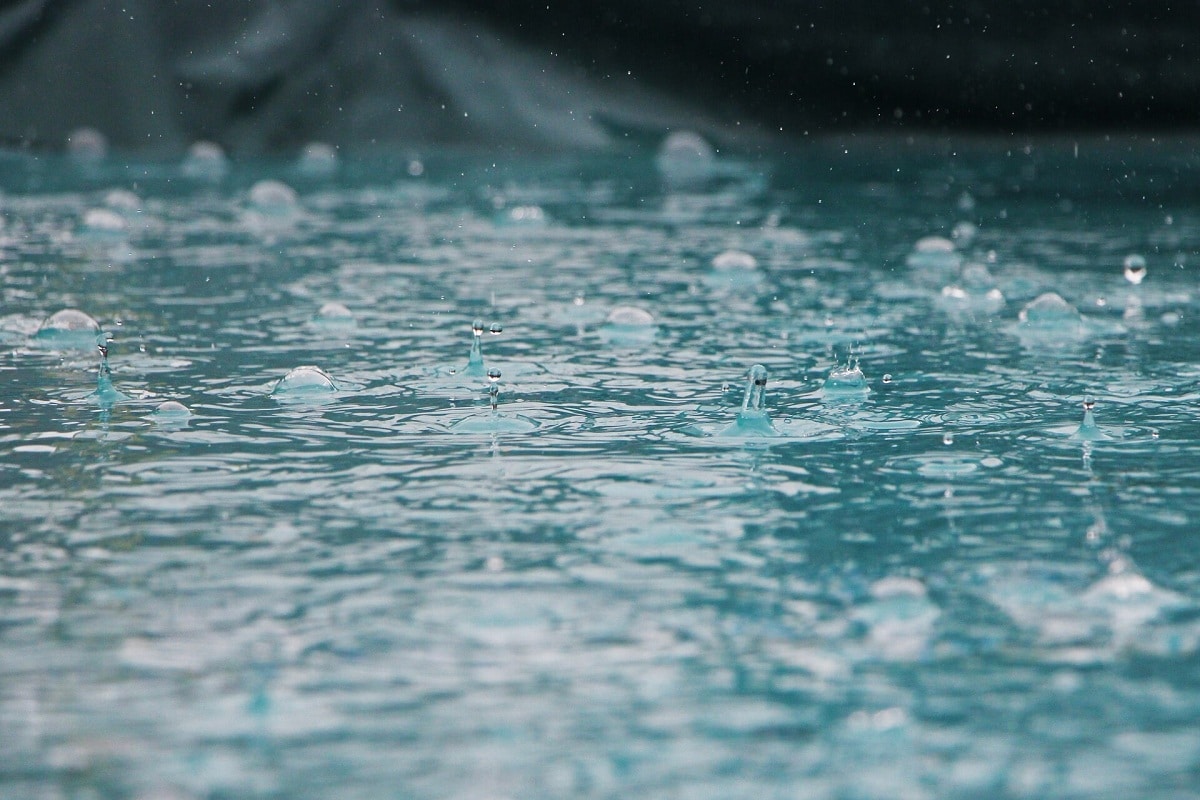
We are used to it raining frequently or not so frequently depending on where we are. However, many people do not know what is the rain and how it is generated. Clouds are made up of a large number of tiny water droplets and small ice crystals. These water droplets and small ice crystals come from the change of state from water vapor to liquid and solid in the air mass. The air mass rises and cools until it becomes saturated and turns into water droplets. When the clouds are full of water droplets and the environmental conditions are favorable for it, they precipitate in the form of ice, snow or hail.
In this article we are going to tell you everything you need to know about what rain is, what its characteristics and origin are.
What is rain and how does it form

When the air on the surface heats up, its height will increase. The temperature of the troposphere decreases as the altitude increases, that is, the higher we go, the colder it becomes, so when the air mass rises, it hits the colder air and becomes saturated. When it's saturated, it condenses into small drops of water or crystals and surrounds small particles with a diameter of less than two microns, which are called hygroscopic condensation nuclei.
When the water droplets adhere to the condensation nuclei and the air mass on the surface continues to rise, a vertically developing cloud mass will form, because the amount of saturated and condensed air will eventually increase in height. This type of clouds formed by atmospheric instability are called cumulus humilis, and when they develop vertically and reach a considerable thickness (enough to allow the passage of solar radiation), they are called cumulonimbus clouds.
For the vapor in the saturated air mass to condense into water droplets, two conditions must be met: one is that the air mass has cooled sufficiently and the other is that there are condensation nuclei that absorb moisture in the air. air.
Once the clouds are formed, what prevents them from producing rain, hail or snow, that is, some type of precipitation? Due to the updraft, the small drops that are formed and are suspended in the cloud will begin to grow, at the expense of other drops that they find when falling. Basically, two forces act on each drop: the resistance exerted on it by the upward flow of air and the weight of the drop itself.
When the droplets are large enough to overcome the drag force, they will rush to the ground. The longer the water droplets spend in the cloud, the larger they become, as they add to other droplets and other condensation nuclei. In addition, they also depend on the time the droplets spend ascending and descending in the cloud and the greater the total amount of water that the cloud has.
Types of rain

The type of rain is given as a function of the shape and size of the water droplets that precipitate when the correct conditions are met. They can be drizzles, showers, hail, snow, sleet, rain, etc.
Drizzle
The drizzle is a light rain, the droplets of which are very small and fall evenly. Generally, these water droplets do not wet the ground too much, but depend on other factors such as wind speed and relative humidity.
Showers
Showers are large drops of water that tend to fall violently in a short time. Rains generally occur where atmospheric pressure falls and forms a center of low pressure called a storm. The rains are related to cumulonimbus-like clouds that form too quickly, so the water droplets get bigger.
Hail and snowflakes
Rains can also be in solid form. For this, ice crystals must form in the clouds above the clouds, and the temperature is very low (approximately -40 ° C). These crystals can grow at very low temperatures at the expense of water droplets freezing (the beginning of hail formation) or by adding other crystals to form snowflakes. When they reach the right size and due to gravity, if the environmental conditions are right, they can leave the cloud and produce solid precipitation on the surface.
Sometimes snow or hail coming out of the cloud, if it encounters a layer of warm air in fall, will melt before reaching the ground, eventually resulting in liquid precipitation.
Rains according to the type of cloud

The type of precipitation depends mainly on the environmental conditions of cloud formation and the type of cloud formed. In this case, the most common types of precipitation are frontal, topographic and convective or stormy types.
Frontal precipitation is the precipitation associated with clouds and fronts (warm and cold). The intersection between the warm front and the cold front forms clouds and produces frontal precipitation. When a large amount of cold air pushes upward and moves the warmer mass, a cold front forms. As it rises, it will cool down and form clouds. In the case of a warm front, the warm air mass glides over the colder air mass.
When the formation of a cold front occurs, normally the type of cloud that forms is a Cumulonimbus or Altocumulus. These clouds tend to have a greater vertical development and, therefore, trigger more intense and higher volume precipitation. Also, the size of the droplet is much larger than those that form on a warm front.
Clouds that form on a warm front have a more stratified shape and are usually Nimbostratus, Stratus, Stratocumulus. Normally, the precipitations that take place in these fronts are softer, of the drizzle type.
In the case of precipitation from storms, also called 'convective systems', the clouds have a lot of vertical development (cumulonimbus) By which will produce intense and short-term rains, often torrential.
I hope that with this information you can learn more about what rain is and what its characteristics are.